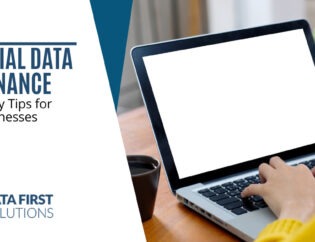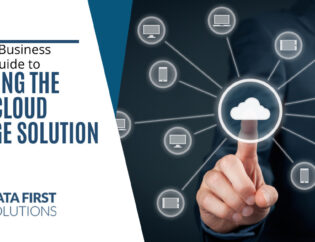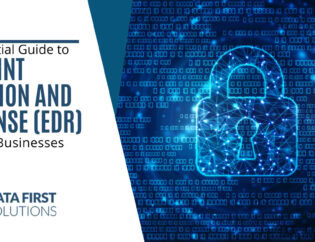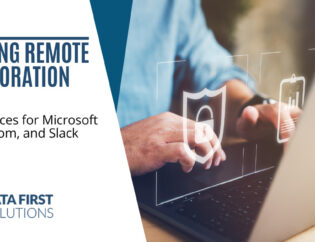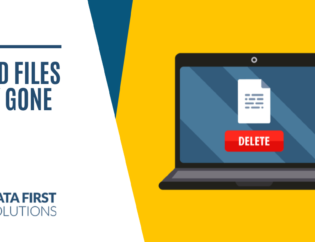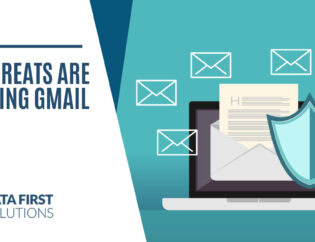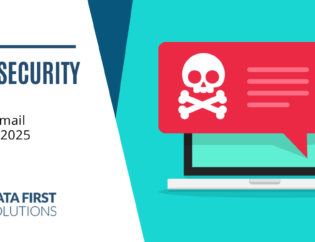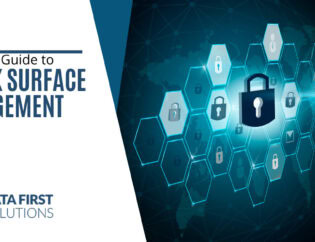
Cyber Security and Digital Data Protection Concept. Icon graphic interface showing secure firewall technology for online data access defense against hacker, virus and insecure information for privacy.
Today’s technology infrastructures are much more complex than they were just 15 years ago. Businesses used to have a contained system with a network connection and a just few computers, all located at the same place.
But now, a company’s IT environment includes cloud solutions, mobile devices, wireless printers, and employees that work both at the office and at home.
The expansion of the business network has led to higher productivity and more agility, but it’s also increased the complexity of cybersecurity.
On top of that, the threat landscape keeps getting more dangerous, and for some reason, Canadians are one of the biggest targets for phishing.
According to a Q1 2019 survey, 52% of global phishing attack targets were located in Canada.
So, how does a GTA business owner properly protect that complicated IT infrastructure from cyberthreats without leaving any areas of vulnerability? Though a multi-layered strategy.
The Important Layers of Cybersecurity
If a hacker can’t get into your network one way, they just try another method. Cybersecurity ends up being a continuing evolution where each side works to outsmart the other.
For example, once antivirus software began to get more sophisticated and could better block emails with malicious attachments, attackers switched tactics to using undetected URLs instead that took users to malicious websites.
The best cybersecurity strategy is to ensure you have the multiple layers you need to block attacks from every entry point.
You can think of it like bank security. Banks don’t only use locks on the door. Banks also use video cameras, physical security guards, time codes on vault doors, and more. All those layers make it much less likely they’ll get robbed.
The same is true when you layer different methods of IT security. It makes it much less likely that you’ll suffer a data breach or other security incident.
Here are the important layers you need to have protecting your business data.
Network Security
The outer ring of your cybersecurity structure is your network security. This includes detecting and stopping intruders as soon as they enter through your internet connection and try to get to your devices.
When planning network security, you have to consider both on-premises and remote worker networks. The COVID-19 pandemic has changed what many company networks look like and they’re now expanded to off-site employees as well.
Network security includes:
Firewall: A firewall can monitor all incoming and outgoing traffic on an on-premises network and block anything that looks suspicious.
VPN: For remote and mobile employees, using a virtual private network (VPN) can encrypt connections even if they happen over unsecure Wi-Fi networks.
DNS Filtering: DNS filtering helps users block the loading of malicious sites even after they click the URL.
Endpoint Security
Your endpoints include any device connected to your network. This includes servers, computers, mobile devices, and IoT devices (like wireless printers or IP security cameras).
Keeping your endpoints secure from threats can be done with a number of best practices:
- Keep all devices (operating system, software, firmware) updated
- Use an endpoint device manager (like Microsoft Intune)
- Use managed antivirus/anti-malware
Physical Security
The physical security of technology is an important layer that not all businesses have in place. This includes ensuring devices have proper physical safeguards and that data can’t easy be stolen via USB or CD.
The physical security layers include tactics such as:
- Putting screen locks on all devices
- Monitoring detachable storage devices (USB, CDs, removable disks)
- Using a mobile device manager that can remotely lock/wipe lost or stolen devices
Cloud Security
One of the skyrocketing attack vectors is the breach of user credentials to compromise cloud accounts.
Since most company data has migrated to the cloud, hackers are now going after it with a vengeance. Cloud service providers tend to have very good security on their platforms, which is why hackers need to gain legitimate access by use of a stolen account login.
Some statistics from a 2020 data breach report by Verizon show just how prevalent credential theft has become:
- Login credentials are the #1 information sought in phishing emails
- Password dumpers were the #1 form of malware used in data breaches in 2019
- 77% of cloud data breaches were due to credential compromise
- Cloud security largely involves protecting your user login credentials and keeping accounts monitored.
- Use multi-factor authentication on all accounts
- Set up cloud accounts to reject weak user passwords
- Use a cloud access security broker (CASB) to monitor cloud account access
Email Security
Most data breaches and malware infections have one thing in common… they all start with a malicious email.
Phishing emails remain the top cause of cybersecurity incidents, which makes email security one of the vital parts of your business security strategy. You want to keep inboxes as free of threats as possible.
This can be done using tactics such as:
- Spam filtering
- Anti-phishing application
- Setting up email authentication to combat email spoofing
- User training on how to spot phishing emails
Is Your Toronto Business Fully Secure?
Data First Solutions can do a complete security audit to see what layers may be missing from your IT security strategy and help you put a solid plan in place to safeguard your data.
Need better cybersecurity? Contact us today to schedule a consultation. Call 416-412-0576 or contact us online.

